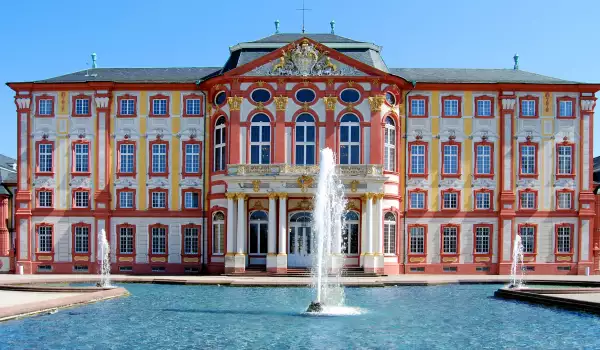Bruchsal Palace

The impressive baroque Bruchsal Palace is one of the most remarkable things that can be seen today in the southwest German town of the same name, which is located 20 kilometers northeast of Karlsruhe in Baden-Wuerttemberg.
Today the city Bruchsal is primarily known as one of the largest producers of asparagus in Europe and as an developed economical production center, but it has kept the amazing historical monuments such as Bruchsal Palace.

Bruchsal Palace was raised by the Bishop of Speyer - Damian Hugo von Schönborn in the early 18th century when this part of Germany appearred similar chain palaces.
The foundations of Bruchsal Palace were laid in 1720 to replace an older residence of Speyer that was demolished in 1689. The new building, which appearred then was not a representation of old building but was a completely new structure, which had claims to be as grand as the palaces such as the French Versailles.
Bruchsal Palace was designed as a large palace complex of power, which consisted of 50 separate buildings. These included the main body of governing bodies, stables, a palace with a lovely garden, apartments of princes and officials.
The reason the entire palace complex of Bruchsal Palace was composed of many separate buildings was quite deliberate - himself Damian Hugo von Schonborn wanted to insure against attempts of the enemy burning his mansion. In case of fire only a small part could be affected by flames and most of the buildings would be saved.
Architecturally the Bruchsal Palace is more opulent and impressive. There are artistic decorations everywhere, cement pieces covered with gold, fountains and ornaments of buildings remind all of the pretension of the princely houses in the 18th century.
Damian himself was known for good taste and a connoisseur of art and as such it was not at all surprising that he had assigned some of the best artists, architects, painters and sculptors to work on the astonishing complex of the Bruchsal Palace.
In 1728 the popular master of Wurzburg - Balthasar Neumann agreed to work in the central building of the Bruchsal Palace. Beneath his hands a genius was born - one of the most beautiful examples of Baroque art, namely the double staircase in the middle of the main building in th Bruchsal Palace.
This staircase is one of the most remarkable and most valuable structures throughout the complex. It leads to two main halls Bruchsal - Prince Hall, which overlooks the city and marble, also known as Imperial Hall, which faces the garden.
The magnificent frescoes and paintings in the Great Hall of the palace and those iconic conservatory and colorful façades of the main palace are the work of the artist Giovanni Francesco Marchini, who worked on them in the years between the 1731-1736.
Today the palace has organized regular tours and you can also visit an interesting museum dedicated to the mechanical musical instruments.















